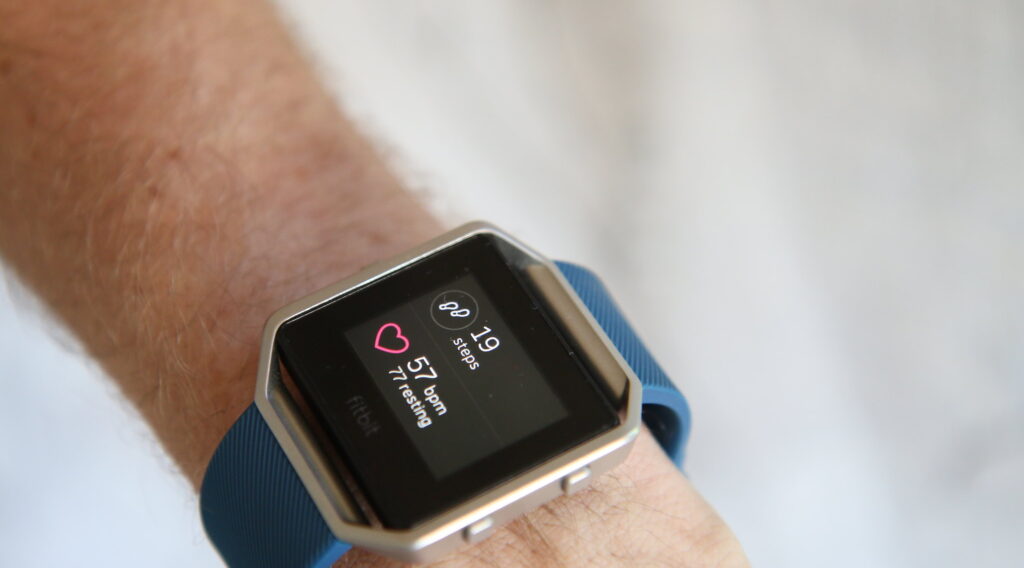This expanded guide breaks down everything you need to know about the Fitbit real time heart rate, from setup to interpretation.

Understanding Your Fitbit’s Heart Rate Monitor
The heart rate monitor in your Fitbit is a sophisticated feature that tracks your pulse using a method called photoplethysmography (PPG). This technique involves shining a green LED light onto the skin and measuring the light that bounces back.
Since blood absorbs light, fluctuations in blood volume during heartbeats change the amount of light reflected back to the sensor. The Fitbit uses this data to calculate your beats per minute (BPM).
This monitoring is crucial for various reasons:
Cardiovascular Health: Regular monitoring can help you understand your heart’s health over time. An unusually high or low resting heart rate can indicate underlying health issues.
Workout Intensity: Knowing your heart rate during exercises helps you maintain the right intensity level for your fitness goals, ensuring you’re not over or under-training.
Calorie Burn: A more accurate calorie burn calculation is possible as the Fitbit can better assess the effort you’re putting into your activities.
Setting Up Your Fitbit for Heart Rate Monitoring
Correct setup and placement of your Fitbit are key to accurate heart rate monitoring. Here’s a step-by-step guide to ensure optimal performance:
Positioning: Wear your Fitbit on your wrist, approximately one finger-width above your wrist bone. The band should be snug but not too tight to avoid discomfort and allow the sensor to read your pulse accurately.
Personal Information: In the Fitbit app, accurately enter your personal details such as age, weight, and gender. This data helps calibrate the heart rate readings to your specific body characteristics.
App Settings: Open the Fitbit app and navigate to the heart rate settings. Here, you can choose the specific type of tracking you want, such as ‘On’, which tracks continuously, or ‘Auto’, which tracks periodically to save battery.
Interpreting Fitbit Heart Rate Data
Understanding the data from your Fitbit’s heart rate monitor is critical for tailoring your fitness routine. Fitbit categorizes heart rate into different zones:
Fat Burn Zone: Typically at 50-69% of your maximum heart rate, this zone is ideal for weight loss and moderate-intensity exercises.
Cardio Zone: At 70-84% of your maximum heart rate, this zone is effective for improving cardiovascular fitness.
Peak Zone: Ranging from 85-100% of your maximum heart rate, this is where high-intensity workouts occur, ideal for building stamina and strength.
To determine your maximum heart rate, subtract your age from 220. Monitoring these zones helps you adjust your exercise intensity to align with your fitness goals.
Utilizing Fitbit Real Time Heart Rate for Workouts
Using real-time heart rate data during workouts allows you to adjust your exercise intensity on the fly. For instance, if you’re aiming for fat loss and your heart rate slips out of the ‘Fat Burn’ zone, you can decrease your workout intensity.
Conversely, if you’re training for endurance and your heart rate isn’t reaching the ‘Cardio’ zone, you might increase your effort. This real-time feedback is invaluable for achieving specific fitness outcomes efficiently.
Maximizing Battery Life While Using Heart Rate Features
Continual heart rate monitoring can drain your Fitbit’s battery. To extend battery life, consider these tips:
Adjust Tracking Frequency: Set your Fitbit to track your heart rate at longer intervals. While this reduces real-time accuracy, it conserves battery life.
Use Quick View: Instead of keeping the display always on, use the ‘Quick View’ feature to check your heart rate only when needed.
Power Saving Modes: Explore power-saving modes available on your Fitbit model, which can reduce background activities to save battery life.
Troubleshooting Common Issues
Common issues with the Fitbit heart rate monitor include inconsistent readings and comfort problems. Here’s how to address them:
Inconsistent Readings: Ensure the device is clean and properly positioned. If readings are still inconsistent, restart your Fitbit or reset its settings.
Comfort Issues: If the Fitbit causes discomfort, try adjusting its position or wearing it slightly looser while ensuring it still maintains contact with your skin.
Device Maintenance: Regularly clean your Fitbit with a soft, damp cloth and avoid exposing it to extreme temperatures.
Seeking Support: If problems persist, contact Fitbit support for assistance or consider visiting a store for hands-on help.
